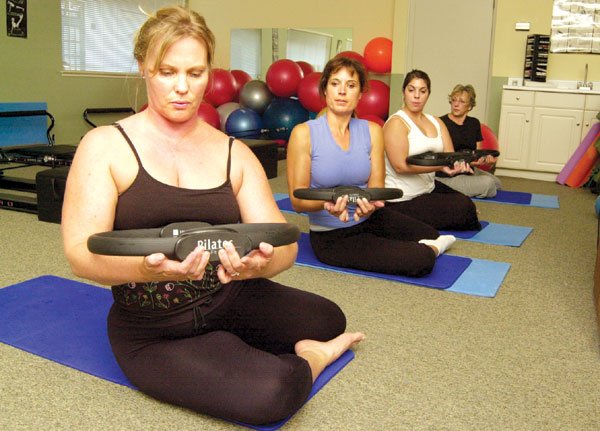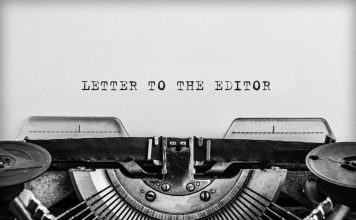The Pilates method, a spring resistance form of non-impact
muscle training, is popping up in gyms, health spas and dance
studios across the country, and it’s attracting the attention of
some unlikely characters.
The Pilates method, a spring resistance form of non-impact muscle training, is popping up in gyms, health spas and dance studios across the country, and it’s attracting the attention of some unlikely characters.
Usually associated with ballet dancers, opera singers and actresses, the exercise form is praised by Hollywood stars like Demi Moore for its ability to develop long, lean muscles. Nowadays, though, it’s attracting kids, senior citizens and big, manly men.
Jason Kidd, the dominant 6-foot-4-inch point guard for the New Jersey Nets is a devotee. He credited the workout system with helping him to lead the team to the 2002 NBA finals, and he’s not alone. Tennis players, competitive skaters, construction workers and corporate CEOs are turning to the system as well, said Theresa Monsour, owner and operator of Inner Balance Pilates in Gilroy.
“It’s an exercise that everyone can do because it’s not high impact, and it’s back-safe,” said Monsour, a certified instructor in the Pilates method. She has been in the field seven years, instructing at her own studio for six. “I have four women who had broken backs. I’ve got kids who are as young as 4, and they’re great.”
Instead of advocating weight training or high-impact cardiovascular exercises, the Pilates method focuses on developing a strong abdominal “core” using mats, inflatable balls and a smattering of simple machines that work using spring resistance and a person’s own body weight, said Cynthia Bullwinkel, a certified Pilates instructor who leads classes at Gold’s Gym and Designing Women gym in Hollister.
The exercises, which sometimes don’t even cause practitioners to break a sweat, work deep muscles in the abdomen, back, buttocks and legs.
“You don’t realize that there are a lot of muscles in your body that aren’t being used every day, but you feel it after Pilates,” said Cathy Shostle, who began Pilates workouts two weeks ago. “You can feel the muscles burning, but when you’re done you don’t just say, ‘Oh God! Get me home to flop out on the couch!’ You still have energy because the main thing it teaches you is breathing and balance.”
Deep breathing, a major part of the Pilates method, is associated with reduced stress and increased feelings of well-being, according to the a recent University of Iowa study, but that’s not the only thing Shostle has noticed since she started the workouts. Already, she said, she feels a difference in her balance. She’s more self-aware, more firm and her diet-induced weight-loss, which had reached a plateau, has picked back up.
Today, doctors refer patients to Monsour, but the exercise has had a long road to popular acceptance. Founded by Joseph Pilates, a German immigrant, the stories of the workout’s origins vary.
What is consistent is this story: Pilates, who was often ill as a child, developed a fascination with human anatomy at an early age. According to various accounts, he would sit for hours in the fields behind his village home, watching the movements of animals and studying pictures of human anatomy.
In time, Pilates emigrated from Germany to the United Kingdom, but was interned as a German national during either World War I or World War II – the timelines aren’t clear.
In camp, Pilates led his fellow inmates in exercises involving breathing and deep muscle stimulation. Never, he would later write, did one of them become ill. He even claimed to have rehabilitated people suffering with everything from scoliosis and back fractures to bum shoulders, and he won a circle of converts.
After the war, Pilates immigrated to the United States and set up a workout studio in New York that quickly attracted a steady clientele of ballet and opera elite, but the workout regime, which focuses on precise, controlled movements in small groups or 1-on-1 instruction, would take a much longer time to reach society as a whole.
In the early to mid 1990s, the method finally surfaced as Hollywood’s latest craze, introducing lay-people like Cynthia Bullwinkel to the method through magazines and popular television programming.
“I was doing a lot of aerobics at the time, but you can only do those for so long before you get a little burnt out,” said Bullwinkel. “I’m 53, and you start to think, ‘How much longer can I keep jumping around like a crazy person?'”
The clients who see the most change from Pilates, in fact, are older, according to Monsour. Many women begin to lose mobility in their spine after their 40s, she said.
“It starts with the neck,” Monsour said. “It gets harder to move from side to side. Then they’ll feel it in their hips, which hurt a lot of the time, and as it progresses, it’ll get into their shoulders. By that point, you’re really restricted in your movement, but Pilates works the muscles around the spine so they become more flexible again.”
Hollister resident Madeline Beaudoin, a retiree who will turn 70 in January, credits a lifetime of physical activity and four years of Pilates for her physical shape. Though she’s about to become a septuagenarian, she still works out every morning and enjoys downhill skiing.
“I think I’m as flexible as I’ve ever been,” said Beaudoin. “My thighs slimmed down. I have more energy. My clothes fit better.”












